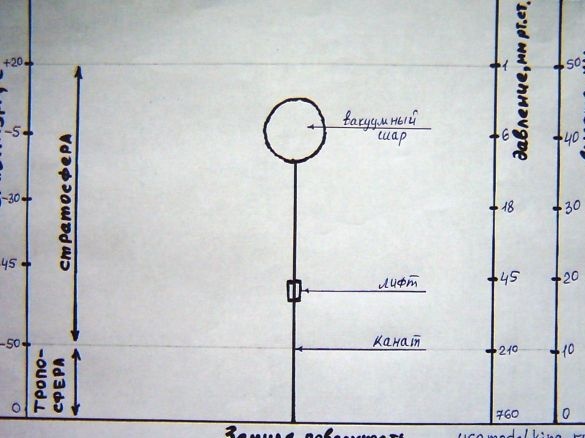How to fly away without fuel ... a hint of a perpetual motion machine ... well ... not really ...
We are all at the bottom ... atmosphere of course ... what did you think ...
So ... the pressure per 1 cm3 is somewhere around 1 kg ... although it already depends on the weather in clear weather - it presses more, but less in cloudy weather ... some people feel it ...
Archimedes will not let you lie; there is his Archimedean force both in water and in the air, in order to emerge from the water, the divers simply take a strong bag and take air from the cylinder (if the diver did not exhale all the air in the water) ...
In the atmosphere, warm air (balloons) is sometimes used for lifting, since warm air is lighter than cold air, it rises up ... gases are also used: helium and hydrogen ...
Helium is expensive, but not combustible, and hydrogen is not very expensive, but it is very combustible ... the fact that only hydrogen is formed during the combustion of hydrogen does not convince you to use it here ...
According to my project, instead of warm air or light gases, vacuum can be used ...
Of course, you say, the vacuum will flatten the ball and nothing will fly ...
That's right ... because the ball should have a margin of safety and should be made of light material ... now they are different ... the "volume" is not bad to make from duralumin ...
I won’t write much about the intricacies of truss structures ... I’ll say that the “volume” can be with arches ... internal struts ... the main thing is completely tight ...
After pumping out the ball’s inner surface, the air will not corrode ... like the outer one when flying high ...
Such a ball does not need to be constantly filled with combustible or expensive light gas ... just if necessary, pump out the air ... and control the tightness ...
Compared to the “thermal ball”, the “vacuum ball” needs a smaller volume (theoretically), but due to the weight of the ball itself, it grows (practically) ...
In general, efficiency depends on the lightness of the material ... you can not necessarily make a ball, but any other shape ...
It is also not bad to make small vacuum balls that can be combined into large beams ... depending on the weight of which you need to lift into the air ...
The ball can reach a height of 40-45 km (the altitude and speed of rise is, in principle, regulated by a vacuum pump) and will hang there for a very long time (than not the “geostationary-stratospheric satellite”) ...
These balls (not to be confused with sales)) can be used to launch rockets with satellites into the stratosphere ... from where it is easier to launch (less fuel for rockets) into space ...
It is possible to make a cable elevator to a height of 40-45 km (there is no wind in the stratosphere - the ball will not blow off) ... at the top there is an observation deck for tourists ...

